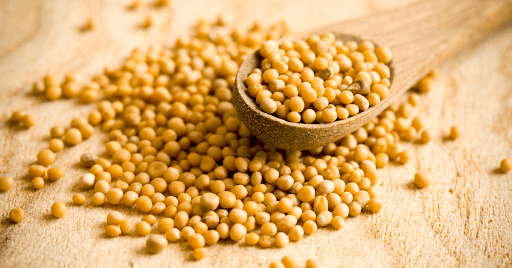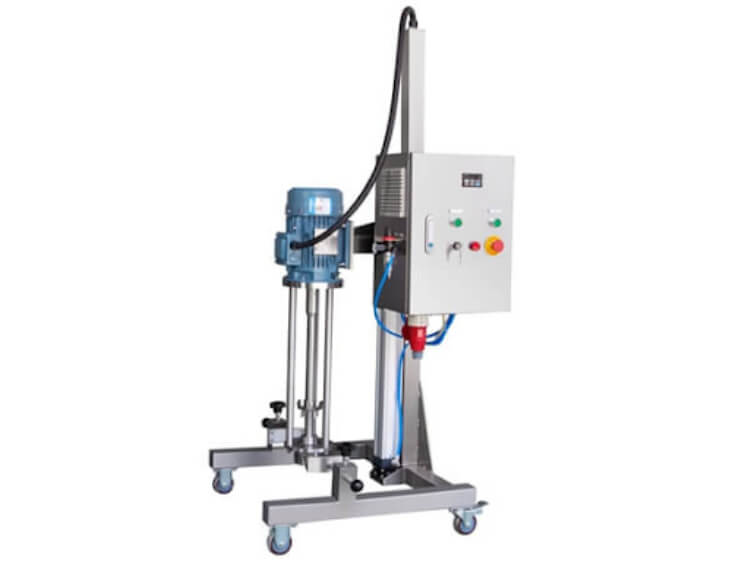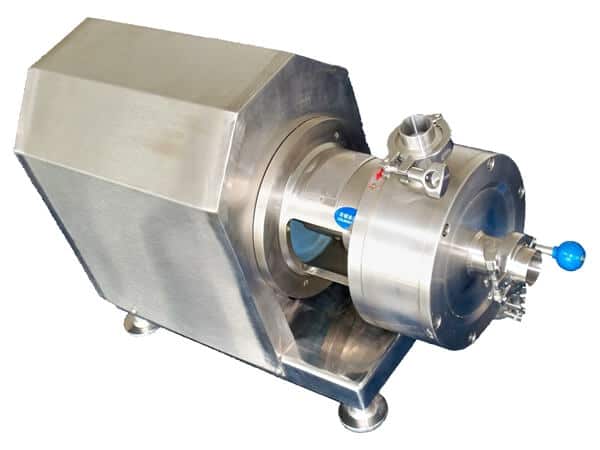Ever wondered how mustard is made? In this article, we’ll take you on a journey through the fascinating world of mustard production alongside all the mixing equipment and machines used in the process!
Mustard, with its wide range of flavors and textures, has become a beloved condiment on dining tables worldwide. In the world of mustard production, the mixing process is a critical step, where the right equipment can make all the difference.
In this article, we’ll delve into the intricacies of modern mustard production, exploring how Ginhong’s industrial mixers play a pivotal role in crafting the perfect mustard blend.
From addressing common mixing challenges to ensuring emulsion stability and effective particle size reduction, Ginhong mixers are the key to mustard-making excellence.
Key Takeaways
- Mustard production is a meticulous process that involves mixing various ingredients to achieve the desired flavor and texture. It involves the interaction of enzymes and the addition of liquids.
- Different varieties of mustard require specific ingredients and fermentation processes.
- The mixing phase is critical in mustard production, as it ensures a stable emulsion free from agglomerates and inconsistencies.
- Conventional agitators can lead to mixing challenges, including longer reaction times, agglomerate formation, and an unstable emulsion.
- Ginhong’s industrial mixers offer an efficient and cost-effective solution to these challenges, providing high shear mixing and rapid dispersion of powders.
Mustard Seeds – The Heart of Mustard

Mustard seeds are the stars of the show when it comes to creating mustard. These tiny seeds, which can be white, brown, or black, are where it all begins. But did you know that the color of the seeds can influence the flavor of the mustard?
- White mustard seeds offer a milder taste.
- Brown and black mustard seeds bring the heat, creating a spicier mustard.
These seeds are the building blocks of this iconic condiment, and their journey is just beginning.
The Manufacturing Process: How Mustard is Made

So, how do mustard seeds transform into that delicious condiment that we all know and love? The manufacturing process involves several essential steps:
- Crushing and Grinding: The journey begins by crushing and grinding the ustard seeds into a fine powder. This is where the magic begins, as the seeds release their natural enzymes, including myrosinase, which give mustard its characteristic sharp flavor.
- The Addition of Liquid: Mustard powder is mixed with water, wine, vinegar, or a combination of these ingredients, depending on the desired mustard variety. Additional spices and flavorings can also be introduced at this stage.
- Fermentation: Fermentation is a crucial step in creating certain types of mustard, like Dijon. It allows friendly microbes to develop the unique robustness that distinguishes Dijon mustard from others.
- Heat and Thicken: During the grinding process, a fair amount of heat is generated, which contributes to the thickening of the mustard to the desired consistency.
Now you understand the journey from seeds to sauce, and you can appreciate the intricate process behind every squeeze of mustard.
The Mixing Process in Modern Mustard Production
When it comes to making mustard, the mixing process is a critical step. Let’s break down how mustard sauces are crafted:
- Initial Ingredient Addition: The mixing journey starts with the water phase, filling the mixer vessel. It’s here that powdered raw materials are dosed or blended into the vessel. These raw materials may include thickening agents, flavors, salt, spices, preservatives, and more, depending on your recipe. In some cases, these ingredients are pre-mixed or milled before being dosed into the mixer.
- Blending Water and Oil: The next step is the addition of the oil phase, which combines with the water phase to create a water-oil emulsion.
- Continuous Mixing: The sauce mixture is continually mixed until it forms a stable emulsion, free from agglomerates, and fish-eyes.
However, using conventional agitators for this process can lead to certain mixing issues, including:
- Longer Reaction Time: Conventional mixers may require longer mixing times.
- Agglomerate Formation: Agitators may not be powerful enough to shear ingredients effectively, resulting in agglomerates.
- Hydration on Vessel Walls: Products can become hydrated and stick to vessel walls.
- Unstable Emulsion: This can result in a non-uniform mixture.
Ginhong Mustard Mixing Equipment Product Range
The choice of industrial mixer depends on various factors, including batch size, formulation, types of ingredients, and the viscosity of the end product. The Ginhong product range offers a versatile selection of mixers to meet your individual processing requirements:
1. High Shear Batch Mixers

Ideal for small batches up to 50 – 80 US gallons, these mixers are perfect for the manufacture of specialty mustards. They can be used on mobile floor stands, making them easy to move from vessel to vessel.
2. High Shear In-Line Mixers

Suited for larger batches, these mixers can be easily retrofitted into an existing plant. They work in conjunction with an efficient in-tank agitator to wet out powder, ensuring aeration-free mixing. In-line mixers are generally pump-fed when processing mustards and can be used to discharge vessels. Ultra Sanitary and High Viscosity models are also available.
3. Powder-Liquid Mixer

These mixers are suitable for batches with large volumes of powders. They minimize aeration and reduce cleaning requirements. You can control the powder addition rate, making them suitable for higher viscosity mixes, even at higher temperatures, with minimal operator input required.
4. RX Vacuum Homogenizer Mustard Mixer

Our RX Vacuum Homogenizer Mustard Mixer Machine is the perfect solution for crafting a wide variety of mustard formulations, from smooth to small particulate mustards. This versatile equipment combines a vacuum-filled blender with an emulsifier and homogenizer, enabling you to create mustards with diverse ingredients like natural products, oils, spices, and powders to achieve the precise flavor profile you desire.
The Vacuum Homogenizer Mustard Mixer can be fully controlled to match your specific mixing requirements, including shear rate and heat-treatment, ensuring the desired product consistency. The vacuum feature enhances product quality by improving the efficiency of circulating powder ingredients during the mixing process.
The Ginhong Solution in Mustard Production
Ginhong’s expertise in industrial mixers, like the ones under the Ginhong brand, plays a pivotal role in the modern mustard production process.
Here’s how they address these mixing challenges:
- Water Phase Mixing: As the water phase is charged into the process vessel, mixing commences.
- Powdered Ingredient Introduction: The powdered ingredients are then introduced into the mixing water phase.
- High Shear Mixing: The workhead induces high shearing between the powders and the liquid in the container.
- Powder Dispersion: The mixer is equipped with a disperser that facilitates quick dispersion of powders. At this stage, multiple points of deformations are created at the contact areas, resulting in consistent blending of powders, oils, and water to form a stable emulsion.
- Continuous Mixing: As the final product is emulsified, it’s pushed out of the stator. The powerful suction created by the rotor continuously draws fresh ingredients towards the workhead, ensuring thorough mixing and deagglomeration.
Advantages of Ginhong Mixer in Mustard Production
- Efficient and Quality Mixing: Ginhong’s mixers offer advanced technology at an affordable cost, ensuring a consistent blend.
- Automation and Ease of Use: These mixers are equipped with automated machinery that’s easy to operate, maintain, and meets food safety standards.
- Sanitary Manufacturing: Ginhong mixers facilitate a clean and waste-minimized mixing environment.
- Versatility: These mixers allow for easy formulation changes and offer a clean-in-place (CIP) friendly design.
- Rapid Dispersion: Powders and sugars are instantly dispersed in liquid at a faster reaction rate.
- Effective High Shear Mixing: Unlike conventional agitators, Ginhong mixers excel in high shear mixing, ensuring emulsion stability and effective particle size reduction.
With Ginhong mixers, the mustard production process benefits from the efficiency and quality that advanced mixing technology offers.
Conclusion
As you explore the art of mustard making, remember that Ginhong’s industrial mixers play a crucial role in achieving the perfect mustard blend. These mixers are designed to address the unique challenges of mustard production, ensuring an emulsion that is smooth, consistent, and free from agglomerates. With their advanced technology, ease of use, and sanitary design, Ginhong mixers are an essential tool for mustard manufacturers seeking excellence in their craft.

